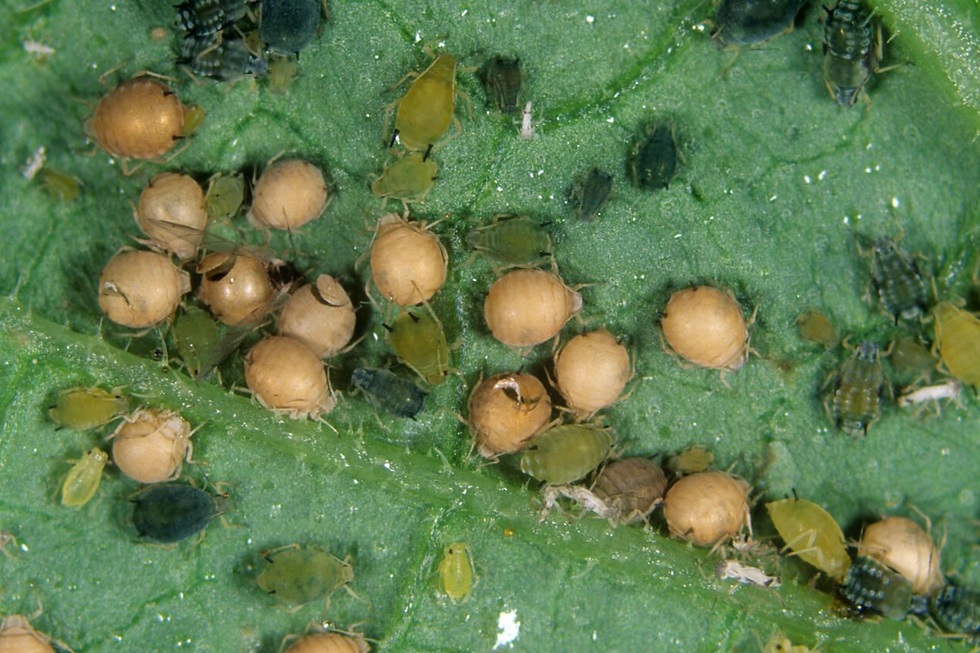Why Aphidius colemani Alone Isn’t Enough: Managing Cotton Melon Aphids in Hot Weather
- Andrei Darie
- Jul 13
- 3 min read
Updated: Jul 23

Cucumber Greenhouses Face a Summer Surge in Aphid Pressure
As greenhouse regions like Ontario heat up, cotton melon aphids (Aphis gossypii) are rapidly becoming a persistent, fast-multiplying challenge for cucumber growers. And even with a trusted IPM plan in place, more growers are reporting that Aphidius colemani isn’t delivering the control they’re used to.
If you’re seeing sticky residue, curling leaves, and aphid colonies spreading faster than usual—this is what you need to know.
The Problem: Aphids Outpace Colemani in High Temperatures
In controlled environments, Aphidius colemani is a reliable tool against aphids. But when greenhouse temps rise above 30°C, two things happen:
Aphid reproduction accelerates
Colemani’s parasitism and survival rates decline significantly
This mismatch leads to:
Escalating aphid hotspots
Leaf and fruit damage
Honeydew buildup and secondary mold
Frustration across your crop team
You’re not mismanaging bios—the biology is shifting faster than your system is responding.
Why It Happens: Heat Disrupts the Biological Balance
Here’s what we see in hot-weather cucumber crops:
Aphids mature and reproduce faster in elevated temps
Aphidius colemani larvae develop more slowly, delaying visible suppression
The effective control window shrinks, especially if bios are introduced reactively
That delay allows aphid colonies to gain momentum and spread aggressively across your canopy.
The Solution: Stack Your Strategy Early and Proactively

Growers maintaining aphid control in hot conditions are doing two things consistently:
Combining multiple natural enemies
Starting releases before pest pressure builds
Recommended Bios for Cotton Melon Aphids in Hot Weather
Aphidoletes aphidimyza – A fast-moving predator that directly attacks aphid colonies.
Green lacewing larvae (Chrysoperla spp.) – Generalist feeders that complement parasitoid activity.
Lady beetles:
Hippodamia convergens – Highly effective against aphids, though availability can fluctuate due to its natural sourcing from California.
Coleomegilla maculata – A newer species available for greenhouse use, with promising adaptability and performance & available from Crop Defenders.
These bios don’t replace Colemani — they support it by reducing the aphid load early, giving parasitoids time to establish.
Release Early. Monitor Aggressively. Intervene Strategically.
An effective hot-weather IPM plan includes:
Preventive releases (especially around transplant)
Weekly scouting of hotspots and aphid ratios
Increased release points near vents, doorways, and known pressure zones
Use of banker plants or supplemental food to support biocontrol reproduction
Many commercial-scale growers also partner with precision application teams to manage timing, placement, and real-time adjustments.
Grower Tip: Don’t Wait for Visual Symptoms

If you're seeing curled leaves or sticky honeydew, aphids are already winning. Instead:
Monitor aphid-to-parasitoid ratios, not just presence
Escalate when aphid colonies outnumber visible mummies or predators
Adapt your release schedule based on scouting thresholds, not the calendar
Final Thought: Colemani Is Still Valuable—But Needs Support in the Heat
Aphidius colemani continues to be a key player in aphid management. But in hot weather, relying on it alone is like sending a single goalie against a full team. You need a squad of biocontrols working together to stay ahead of fast-replicating pests.
Let’s Build Your Custom Hot-Weather Aphid Control Plan
Every greenhouse is different, with unique challenges. At Crop Defenders, we work with greenhouse teams across North America to design customized IPM programs that are tailored to your crops & varieties, growing system & location.
Contact us, and let's create a strategy that can sustainably save your yields and margins.


